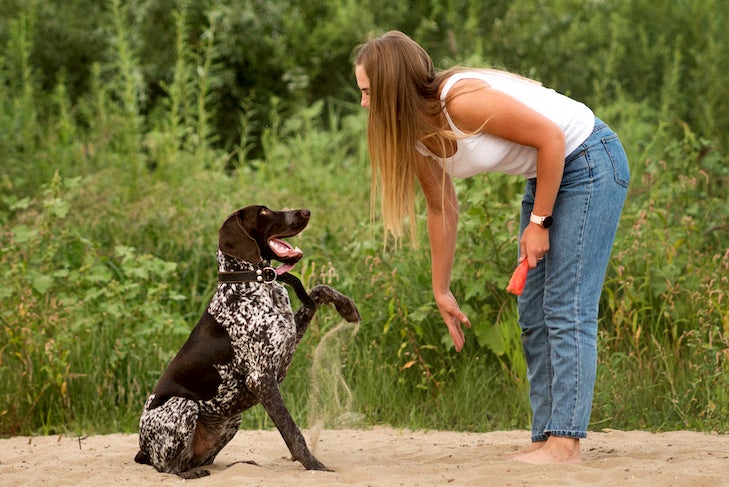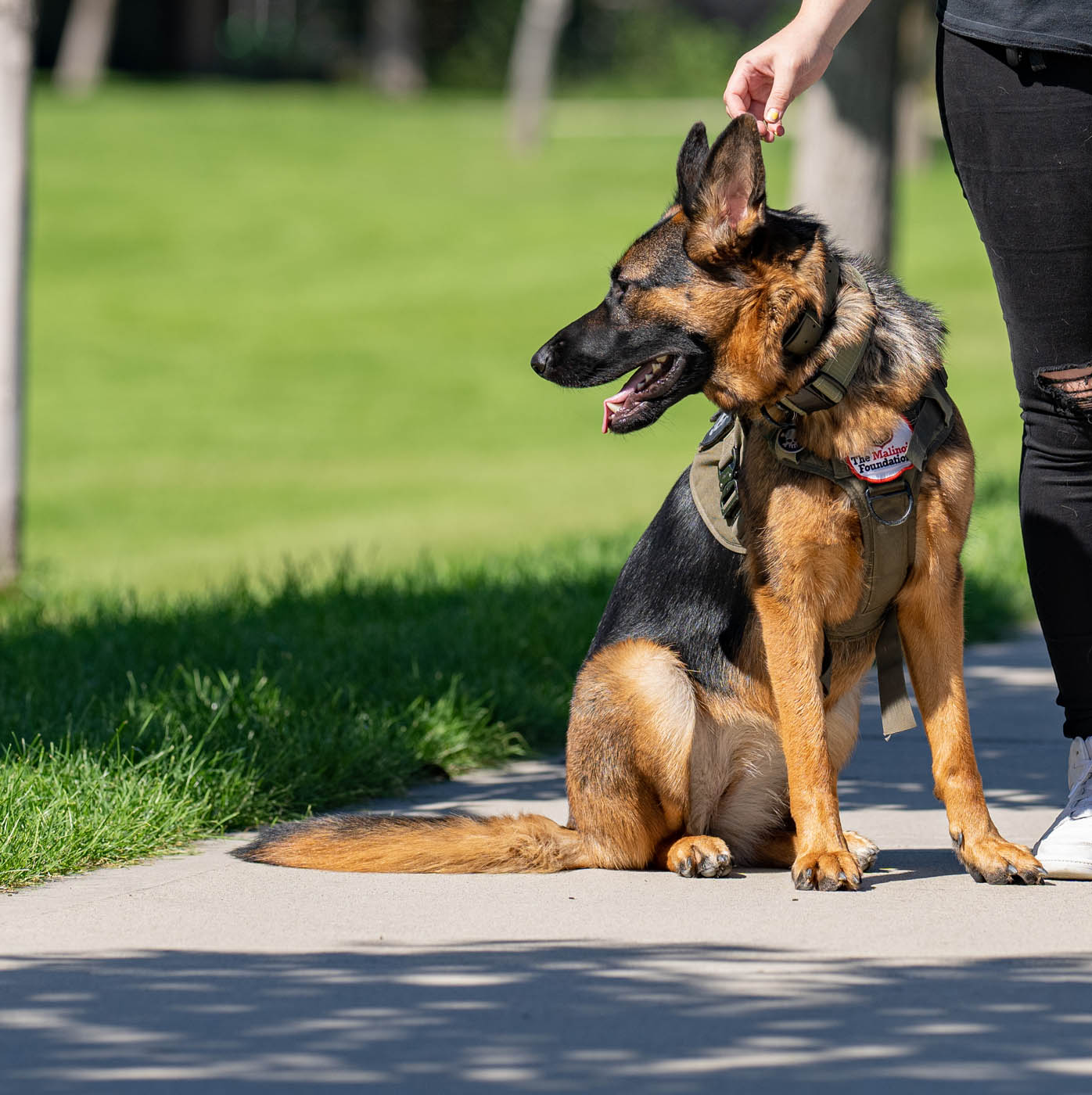Unlock Your Canine's Prospective: Proven Canine Training Techniques for Success
Reliable pet training is a nuanced procedure that rests on understanding canine behavior and employing scientifically backed strategies. Dog training. By integrating positive reinforcement, establishing clear commands, and focusing on socializing, pet owners can cultivate an effective connection with their family pets. Nonetheless, difficulties usually arise that require customized solutions and a patient approach. Checking out these shown methods exposes not only the possibility for behavior renovation however likewise the much deeper bond that can be created between owner and dog. What important strategies must be considered to truly unlock your pet's capacity?
Recognizing Pet Dog Behavior
Recognizing pet dog behavior is important for efficient training and promoting a favorable connection in between pets and their owners. An extensive grasp of canine body movement, articulations, and social communications is essential for identifying their demands and emotions. Pet dogs communicate primarily via non-verbal signs; for instance, a wagging tail may show enjoyment, while pinned ears can indicate worry or entry.

Moreover, environmental factors play a significant role in forming a pet's actions. Modifications in regular, brand-new surroundings, or the presence of unfamiliar individuals can result in anxiety or anxiety in dogs. Identifying these triggers allows owners to alleviate unfavorable responses and establish proper training methods.
Inevitably, a deep understanding of pet habits lays the foundation for effective training techniques, improving both actions and the general bond between the pet and its owner. dog training near me. This knowledge is essential for fostering a well-adjusted, satisfied canine buddy
Positive Support Methods
Effective training counts greatly on positive support methods, which have actually been shown to generate considerable results in forming desired actions in pets. This method entails compensating a canine for exhibiting certain behaviors, therefore boosting the possibility that these behaviors will be duplicated. Rewards can take numerous types, consisting of treats, appreciation, toys, or play, depending on what inspires the specific pet dog.

It is important to gradually terminate benefits as the canine learns the actions, transitioning to recurring reinforcement. This technique maintains the actions gradually while avoiding dependency on consistent benefits. By focusing on favorable reinforcement, instructors can grow a trusting relationship with their dogs, promoting a cooperative and healthy training environment that improves overall obedience and performance.
Developing Constant Commands
A fundamental facet of successful pet dog training is the establishment of constant commands. Uniformity in commands is critical for reliable interaction in between the canine and the trainer. When commands are uniform, dogs learn to connect certain words with desired habits, which accelerates the training process and boosts understanding.
To establish constant commands, it is essential that all relative use the exact same terms and gestures. For example, if someone uses "sit" while one more claims "rest down," it can produce complication for the canine. Select clear, distinct words for commands and make certain everybody associated with the canine's training sticks to these options.
In addition, repetition is essential. Strengthen commands through constant technique, guaranteeing that the pet dog obtains enough opportunities to respond correctly. When a canine effectively complies with a command, immediate positive reinforcement should follow. This could be in the form of treats, praise, or playtime, solidifying the connection in between the activity and the command.
Last but not least, be patient. Developing regular commands requires time and initiative. With dedication and quality, you will aid your pet establish a strong understanding of expectations, inevitably bring about a mannerly buddy.
Socialization and Direct Exposure
Mingling a pet dog is necessary for promoting a confident and well-adjusted friend. This process entails subjecting your canine to a you could try these out range of atmospheres, people, and various other animals to create their social skills and flexibility. Early socializing, ideally in between the ages of three to fourteen weeks, is critical, as it lays the groundwork for a pet's future behavior.
Throughout socialization, purpose to offer positive experiences in different setups, such as parks, hectic roads, and homes with various other family pets. Introduce your pet dog to various stimulations, including noises, sights, and scents, making sure that each experience is satisfying. This exposure aids minimize concern and anxiety, leading the way for a much more resistant canine.
Taking part in regulated team play sessions with various other pets can also enhance social skills, showing your pet appropriate interactions and borders. Constantly monitor your pet's comfort level throughout these experiences, slowly increasing exposure as their self-confidence grows. Keep in mind, the objective is to create an all-round pet that flourishes in diverse scenarios, advertising a harmonious relationship with both people and other animals. Prioritizing socialization will dramatically contribute to your dog's general happiness and habits throughout their life.
Overcoming Common Training Challenges

One more frequent problem is distraction. Pet dogs may have a hard time to focus in unknown or active settings. Slowly desensitize your dog to distractions by beginning training in a silent atmosphere and gradually introducing more stimulations as they become skillful (Dog training). Positive support techniques, such as deals with and praise, can keep motivation and focus.
Additionally, behavioral problems like jumping or extreme barking can come to be frustrating. Address these by instructing alternate habits, such as sitting comfortably when welcoming visitors. Uniformity and persistence are critical; enhance desired behaviors regularly and avoid scolding, which can result in confusion.
Finally, acknowledge that each canine is distinct, and training timelines may vary. Tailor your approach to your dog's individual demands, and look for specialist advice if necessary. With perseverance and the right techniques, conquering these challenges can lead to a trained, satisfied canine buddy.
Final Thought
To conclude, unlocking a pet's possible demands a thorough strategy that includes an understanding of canine actions, the application of favorable support strategies, and the establishment of consistent commands. Early socializing and direct exposure to diverse environments better improve a canine's versatility and confidence. By resolving typical training challenges with customized techniques and patience, a participating and harmonious relationship in between canine and handler can be cultivated, eventually resulting in a mannerly companion with the ability of flourishing in numerous circumstances.
Effective pet dog training is a nuanced process that pivots on understanding canine actions and employing medically backed methods.Comprehending pet actions is vital for effective training and cultivating a favorable partnership in between dogs and their owners.Effective training depends heavily on favorable support techniques, which have actually been revealed to yield considerable outcomes in shaping preferred actions in dogs. When commands are uniform, pet dogs find out to link particular words with preferred actions, which accelerates the training process website link and improves understanding.
In verdict, unlocking a canine's prospective demands a comprehensive method that includes an understanding of canine actions, the application of positive support techniques, and the establishment of constant commands.